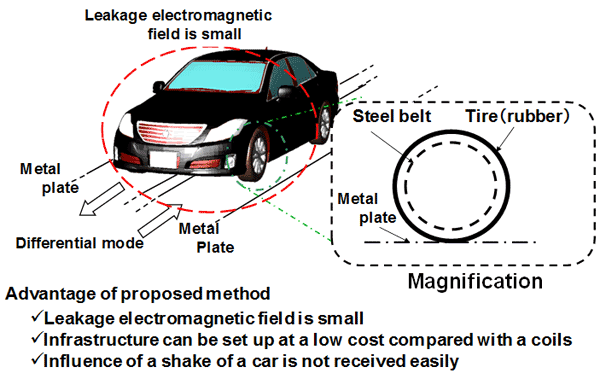Two issues preventing the widespread uptake of electric vehicles are recharging time and lack of range. Now, scientists have shown one potential means of negating these issues. Their demonstration of electric power transfer via the car-wheel is claimed as the world's first.
Electric vehicles can already be powered via infrastructure in the road. The South Korean city of Gumi uses a means of electromagnetic induction to power some of its buses. This newly-demonstrated method, however, uses radio frequency transmission.
The concept has been developed by Masahiro Hanazawa of Toyota Central R&D Labs and Takashi Ohira of Toyohashi University of Technology. It avoids the need for potentially dangerous contact conductivity devices by up-converting energy from power lines into radio frequency using high-speed inverters.

The radio frequency voltage is applied to a balanced metal track running under the surface of the road. The car then picks up this voltage "via electrical capacitance between the metal and a steel belt installed inside of the tires of the EV."
To test their concept, Hanazawa and Ohira created a 1/32 scale electric vehicle. Using the prototype, they were able to show that such a vehicle could be propelled at a frequency of 52 MHz with a power penetration efficiency of over 75 percent.
Hanazawa and Ohira believe that the technology has the potential to enable "a tremendous extension of the EV cruising range." Indeed, by powering electric vehicles in real-time, it would hypothetically allow them to run indefinitely on much smaller batteries than are currently required.
The electric power transfer via the car-wheel concept was demonstrated at CEATEC last week.






